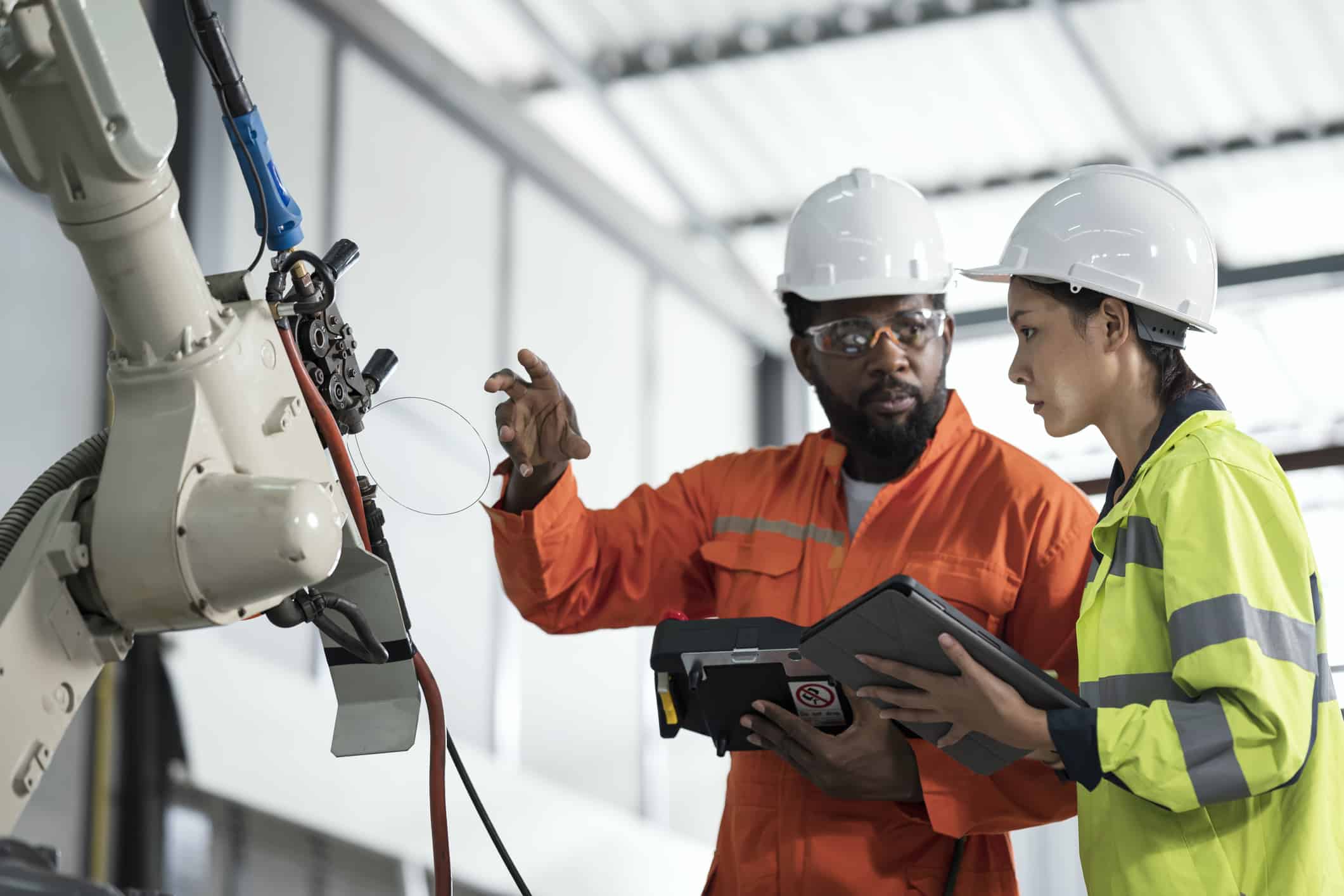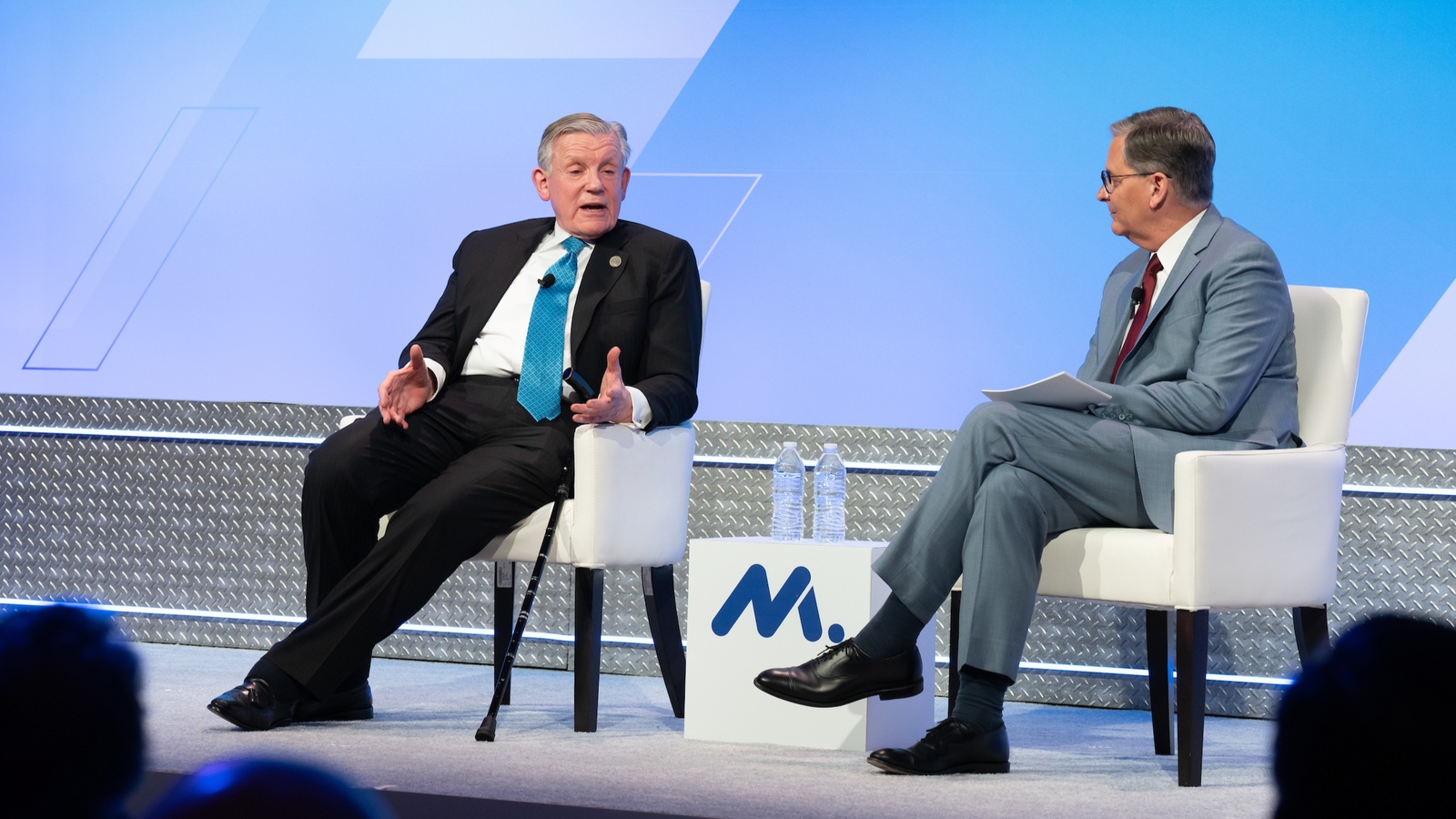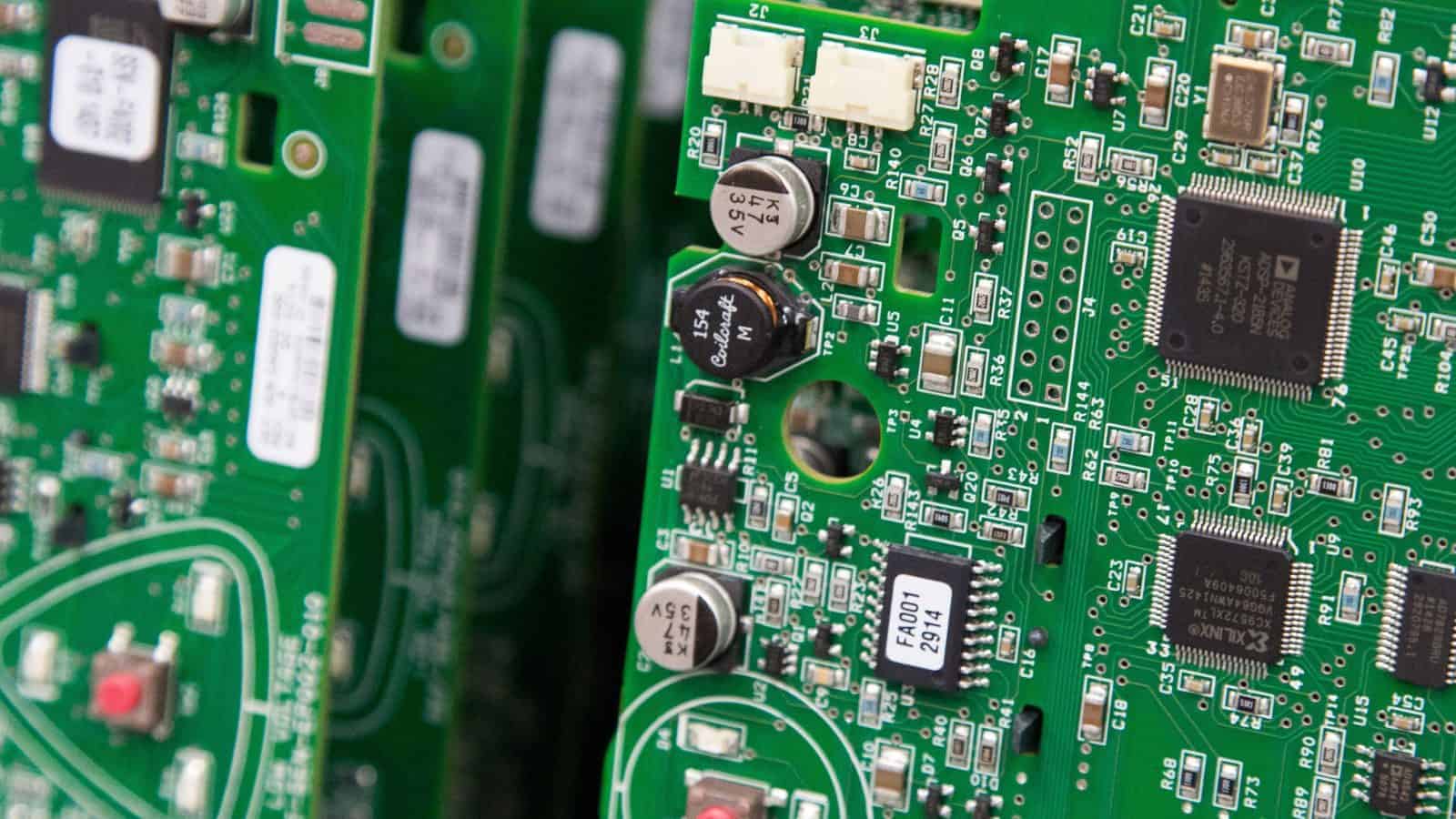New MI Report: Manufacturers Make Strides in Addressing DE&I Priorities
Since the MI’s inaugural DEI benchmarking survey, conducted in partnership with Keybridge and released in October 2021, manufacturers have taken active steps to improve DEI in the workplace. The MI has recently surveyed manufacturers again to highlight current practices and attitudes around DEI in our new DEI Benchmarking in Manufacturing Report. Our updated survey lays out how manufacturing employers are approaching their companies’ initiatives in new ways. The report provides helpful information on the state of DEI in the manufacturing industry and recommendations for employers to use as they improve on progress made over the last two years. Check it out here.
KEY TAKEAWAYS:
- 72% of manufacturers agreed that improving and maintaining DEI was a key focus for their company – and many of them have been taking tangible steps towards that goal.
- More than 60% of respondents reported that the representation of women within their companies has increased in the past 5 years.
How Are Companies Using AI?

To learn how sectors and businesses are using artificial intelligence, The Economist (subscription) created an index of firms in the S&P 500—and the results show that “even beyond tech firms the interest in AI is growing fast.”
What’s going on: “We looked at five measures: the share of issued patents that mention AI; venture-capital (VA) activity targeting AI firms; acquisitions of AI firms; job listings citing AI; and mentions of the technology on earnings calls. … [C]lear leaders and laggards are already emerging.”
The findings: In the past three years, approximately two-thirds of the companies examined by The Economist have placed a job ad that refers to AI. One of the sharpest increases in such mentions has been among chipmakers.
- The number of registered AI-related patents rose between 2020 and 2022.
- This year, about 25% of venture deals by S&P 500 companies involved AI start-ups, an increase from 19% just two years ago.
Outside Silicon Valley: While the index found that the most “enthusiastic” users of AI are technology companies, “[b]eyond tech, two types of firms seem to be adopting AI the quickest.”
- Data-heavy sectors, including insurance, pharmaceutical and financial-services companies “account for about a quarter of our top 100.” In this category, Abbott is building AI-powered medical tools.
- The other category of company quickly adopting AI includes “industries that are already being disrupted by technology,” such as automakers, telecom, retail and media. Among these are Ford and General Motors, which are using AI in electric-vehicle manufacturing.
The last word: AI use may have some drawbacks, including cybersecurity risks, potential legal liability and possible inaccuracy of results. However, these “must be weighed against the potential benefits, which could be vast.”
Start-ups Seek Improved AC

With the backing of major HVAC manufacturers, start-ups are working to make air conditioners that are capable of easing the strain on the power grid, according to The Wall Street Journal (subscription).
What’s going on: “Companies such as Blue Frontier, Transaera and Montana Technologies are raising money from investors including industry giant Carrier Global … to develop more efficient technologies. Many of those efforts focus on the humidity rather than the heat, using new materials like liquid salt to dry out the air.”
Why it’s important: The number of air conditioners in use worldwide is expected to more than double by the middle of the century, to 5.5 billion, with many units likely to be inefficient.
- “Stalwarts such as Carrier and Trane Technologies say they are spending billions of dollars to offer more efficient versions of conventional ACs while evaluating the new approaches.”
A different AC unit: Traditional air-conditioning units work by converting refrigerants from gas to liquid and then back again, while circulating air with fans. They are unable to remove humidity without cooling the air, which is what makes them inefficient, according to the article.
- “Blue Frontier aims to separate humidity and temperature control using a liquid salt solution that was developed with the National Renewable Energy Laboratory. The solution also stores energy, reducing consumption at peak times, when electricity grids are strained on hot days.
- Innovation is also required to make air conditioning affordable for people in developing nations, according to the Journal.
More investment: “The need for new approaches is pushing Carrier to make venture investments to complement its other growth strategies, said Jennifer Anderson, Carrier’s chief sustainability officer. Trane is investing in startups like data-center-cooling company LiquidStack while looking at new technology approaches, CEO Dave Regnery said.”
Manufacturers Make Progress on DE&I

Diversity, equity and inclusion efforts have a lot of payoffs: they widen talent pipelines, increase retention rates and improve business outcomes. So what are manufacturers doing to strengthen DE&I in their workplaces? A newly updated survey from the MI and Keybridge has the answers.
What it is: The MI and Keybridge conducted their inaugural DE&I benchmarking survey in October 2021, and manufacturers’ DE&I efforts have grown a lot since then. One year later, the MI and Keybridge repeated the survey, and the results are in—along with recommendations for manufacturers seeking to grow further.
A firm commitment: 72% of manufacturers agreed that improving and maintaining DE&I was a key focus for their company in 2022—and many of them have been taking tangible steps toward that goal.
- Of the 60% of companies that made public statements affirming their commitment to DE&I, most have followed through with diversity commitments, employee resource groups, donations and transparent updates on their DE&I progress.
Widening talent pools: More than 60% of respondents reported that the representation of women within their companies has increased in the past five years. Still, there were also some challenges in expanding the diversity of hiring pools.
- 50% of companies reported struggling with hiring diverse candidates, with 40% struggling with retaining diverse workers.
Where to start: Companies that have not yet taken concrete actions toward fulfilling their commitments can get started by developing a strategic plan or designating a senior leadership position for DE&I issues, the report recommended.
- Another useful tactic is setting up feedback mechanisms for employees, so the company can track its progress on DE&I.
More recommendations: For those further along, the report suggests other moves, including:
- Expand recruitment pipelines by partnering with community organizations, community colleges and technical schools to tap into more diverse pipelines.
- Update position descriptions with language that widens and diversifies the applicant pool.
- Review hiring practices to minimize bias, such as by including blinded resume reviews, standardizing interview questions and employing skills tests and panel interviews.
- Standardize the promotion processes by using the same scoring system and criteria for all employees, seeking input from multiple sources and highlighting clear career pathways.
- Standardize work assignment systems by cross-training workers, to ensure that no one employee is stuck in an undesirable role for too long.
The last word: “The labor market is historically tight, and we know the number one issue for manufacturers is workforce,” said NAM Chief Economist and Manufacturing Institute Center for Manufacturing Research Director Chad Moutray. “Focusing on DE&I is a great way to widen the net and retain the employees that you have.”
Manufacturers Make Progress on DE&I

Diversity, equity and inclusion efforts have a lot of payoffs: they widen talent pipelines, increase retention rates and improve business outcomes. So what are manufacturers doing to strengthen DE&I in their workplaces? A newly updated survey from the MI and Keybridge has the answers.
What it is: The MI and Keybridge conducted their inaugural DE&I benchmarking survey in October 2021, and manufacturers’ DE&I efforts have grown a lot since then. One year later, the MI and Keybridge repeated the survey, and the results are in—along with recommendations for manufacturers seeking to grow further.
A firm commitment: 72% of manufacturers agreed that improving and maintaining DE&I was a key focus for their company—and many of them have been taking tangible steps toward that goal.
- Of the 60% of companies that made public statements affirming their commitment to DE&I, most have followed through with diversity commitments, employee resource groups, donations and transparent updates on their DE&I progress.
Widening talent pools: More than 60% of respondents reported that the representation of women within their companies has increased in the past five years. Still, there were also some challenges in expanding the diversity of hiring pools.
- 50% of companies reported struggling with hiring diverse candidates, with 40% struggling with retaining diverse workers.
Where to start: Companies that have not yet taken concrete actions toward fulfilling their commitments can get started by developing a strategic plan or designating a senior leadership position for DE&I issues, the report recommended.
Read the full story here.
Second Phase of CHIPS Act Funding Begins

Businesses “that provide tools, chemicals and other supplies for the semiconductor industry” may now apply for a piece of the funds set aside in last year’s CHIPS and Science Act, according to The Wall Street Journal (subscription).
What’s going on: Late last week, the Biden administration announced broadened eligibility for companies capable of using federal subsidies to increase chip production in the U.S.
- Last year’s legislation, which the NAM championed, earmarked $39 billion for the purpose.
- In February, the Commerce Department’s CHIPS Program Office began “accept[ing] applications for the construction, expansion, or modernization of semiconductor materials and manufacturing equipment facilities for which the total capital investment equals or exceeds $300 million,” according to the National Institute of Standards and Technology, which is part of Commerce.
Why it’s important: “‘We can have as many fabs [chip plants] as we want, but the reality is, we also need the supply chain—the chemicals, the material, the tools that go into those fabs,’ Commerce Secretary Gina Raimondo said at a briefing,” according to the Journal.
Lots of interest: Nearly 400 businesses across 37 states have signaled their interest in receiving funds under this latest phase.
- “The department is already accepting full applications for the C[HIPS] Act funding from companies with plans to build facilities for leading-edge semiconductors, and will soon accept submissions from companies that plan to build chips that are currently state-of-the-art or older.”
- Suppliers may begin submitting applications this fall, but the administration has not yet said when the funds will be disbursed.
NAM Honors Vermeer’s Mary Andringa

When Mary Andringa arrived at NAM headquarters on Wednesday, she expected a tour of the renovated office. Instead, the former NAM Board chair was surprised by an applauding crowd who gathered for the ribbon-cutting for one of the NAM’s meeting rooms, now named the Mary Andringa Room in commemoration of her decades-long service to manufacturers in the U.S. The NAM’s conference rooms are named for many luminaries of manufacturing, including Andrew Carnegie, Thomas Edison, the Wright Brothers, Jonas Salk and Marie Curie.
“I was absolutely overwhelmed, humbled and honored,” Andringa said.
A longtime supporter: Now chair emeritus of Vermeer Corporation—a family-owned, midsized manufacturer of industrial and agricultural machines in Pella, Iowa—Andringa served as NAM Board chair from 2011 to 2013 and has been an active participant on the NAM Board since the early 2000s.
- Andringa found her experience as NAM Board chair deeply meaningful, remarking on the close relationship she developed with NAM President and CEO Jay Timmons, who was also newly appointed in 2011.
- “It was a really great experience because I had a few years under my belt as CEO [of Vermeer],” Andringa said, “and I could share best practices with Jay. It was great to see how he took initiative and dug into some areas that needed more cooperation, like the NAM’s partnerships with state associations.”
Visiting the Hill: Andringa said she “enjoyed being a voice for manufacturing” in meetings on the Hill and with several administrations.
- Whether advocating against compliance regulations that created needless hardship for manufacturers, or for removing trade barriers impeding U.S. exports, Andringa stressed that she always made her case to policymakers on both sides of the aisle.
- “The NAM tries to be the voice of reason. … It has done a good job connecting with both parties and whoever is in the White House,” she said.
Read the full story here.
Manufacturers Seek Smart AI Policy

Artificial intelligence is transforming manufacturing, and federal policies shouldn’t get in the way, NAM Director of Human Resources and Innovation Policy Julia Bogue told the Department of Commerce last week.
Four key areas: Manufacturers are chiefly concerned about AI in four areas.
- Safety: “AI is broadly used in the factory setting to prevent injury by making tasks safer,” Bogue pointed out. “AI is also used to prevent future injury by studying repetitive movement that could lead to torn rotator cuffs, wear on knee cartilage and other injuries caused over time.”
- Training: AI is also revolutionizing training for workers, teaching them how to complete tasks and learn new procedures while on the job.
- Efficiency: AI aids efficiency in a number of ways, including through predictive maintenance for manufacturing equipment. It can predict when a part will need to be replaced, so that maintenance can be scheduled at the least disruptive time. “An example of this is utilizing AI to monitor fan vibration to calculate when the fan will need to be replaced,” Bogue noted.
- Product design and development: “AI can be used to make products safer, improve quality and improve efficiency,” Bogue said.
Regulations: “Regulation should not restrict innovation or competitiveness, as the NAM believes the growth of AI represents an opportunity for manufacturers,” said Bogue. Manufacturers understand the need for careful, smart regulation, she added.
- In a recent survey by the Manufacturing Leadership Council (the NAM’s digital transformation arm), 75.9% of survey respondents said that “manufacturers should adopt a code of ethics or conduct” for the use of AI.
How to do it: The federal government should tailor its regulations to different sectors, evaluating the risks of particular use cases instead of applying a single standard, said Bogue.
- As the agency conducts its analysis, it should also consider that “our present understanding of risks, costs and benefits may be limited because technology lends itself to future unanticipated breakthroughs and applications.”
Further reading: Interested in learning how manufacturers can apply AI technologies to their operations? Connect with the MLC to learn more—and consider signing up for its annual conference, Rethink, coming up soon on June 26–28 in Marco Island, Florida. Virtual attendance is also an option!
Manufacturers Seek Smart AI Policy

Artificial intelligence is transforming manufacturing, and federal policies shouldn’t get in the way, NAM Director of Human Resources and Innovation Policy Julia Bogue told the Department of Commerce last week.
Four key areas: Manufacturers are chiefly concerned about AI in four areas.
- Safety: “AI is broadly used in the factory setting to prevent injury by making tasks safer,” Bogue pointed out. “AI is also used to prevent future injury by studying repetitive movement that could lead to torn rotator cuffs, wear on knee cartilage and other injuries caused over time.”
- Training: AI is also revolutionizing training for workers, teaching them how to complete tasks and learn new procedures while on the job
- Efficiency: AI aids efficiency in a number of ways, including through predictive maintenance for manufacturing equipment. It can predict when a part will need to be replaced, so that maintenance can be scheduled at the least disruptive time. “An example of this is utilizing AI to monitor fan vibration to calculate when the fan will need to be replaced,” Bogue noted.
- Product design and development: “AI can be used to make products safer, improve quality and improve efficiency,” Bogue said.
Regulations: “Regulation should not restrict innovation or competitiveness, as the NAM believes the growth of AI represents an opportunity for manufacturers,” said Bogue. Manufacturers understand the need for careful, smart regulation, she added.
- In a recent survey by the Manufacturing Leadership Council (the NAM’s digital transformation arm), 75.9% of survey respondents said that “manufacturers should adopt a code of ethics or conduct” for the use of AI.
How to do it: The federal government should tailor its regulations to different sectors, evaluating the risks of particular use cases instead of applying a single standard, said Bogue.
- As the agency conducts its analysis, it should also consider that “our present understanding of risks, costs and benefits may be limited because technology lends itself to future unanticipated breakthroughs and applications.”
Further reading: Interested in learning how manufacturers can apply AI technologies to their operations? Connect with the MLC to learn more—and consider signing up for its annual conference, Rethink, coming up soon on June 26–28 in Marco Island, Florida. Virtual attendance is also an option!
From JFK to Mother Teresa: The Career of Snap-on CEO Nick Pinchuk

In an interview with Nick Pinchuk, you will start with JFK, meander through Ralph Waldo Emerson and the New Testament, meet Mother Teresa along the way and find out only at the end that he helped send the Viking probe to Mars. And let’s not forget another achievement: he delivered his own child in the backseat of the family car.
The Snap-on chairman and CEO, an executive committee member and stalwart supporter of the NAM, sat down for a very wide-ranging interview with NAM President and CEO Jay Timmons at the NAM’s recent board meeting, at which he received the Manufacturing Icon Award. Here are some of the highlights.
Starting with Kennedy: When asked how he got into manufacturing, Pinchuk cites Kennedy’s 1961 speech promising that the U.S. would put a man on the moon by the end of the decade. Pinchuk was one of the “millions of young people” who pursued STEM careers because Kennedy inspired them, he said.
- He then found himself shipped to Vietnam after a stint in the Reserve Officers’ Training Corps. His experience in the army later helped launch him into management at Ford, when the company was looking for someone who could “run something 24 hours a day”—just as he had in Vietnam.
- He “parlayed” that experience into a business degree, then rose fast in two other organizations—United Technologies and Carrier. His experience in Vietnam helped a second time, leading Carrier to choose him to run its Asia operations.
- Finally, Snap-on came calling, looking for someone with international experience. “On a day in which the board of directors likely had too much wine,” Pinchuk joked, “they decided to give me the CEO job.”
The life lesson? “I probably am sitting here because I went to Vietnam. It could never have been planned.” Pinchuk said. “I’ve made friends in many countries. I’ve opened factories. I’ve met two canonized saints of the Catholic Church and actually a lot of presidents. They weren’t part of a life plan. They were opportunities that arose in which I was prepared and privileged to participate.”
- And here’s another thing he didn’t exactly plan: while driving his wife to the hospital at 4:30 a.m. after she went into labor, he found himself forced to “pull into an empty parking lot and run around, open the door and play catch.”
Purpose: Timmons and Pinchuk discussed the necessity of upskilling the workforce, and in the course of explaining why a sense of purpose is so important to workers, Pinchuk mentioned the time he met Mother Teresa.
- “I talked to her, and she said a bunch of things to me that changed my life. She said, here’s an example that might be useful to you. I was walking down a street with some of my sisters and a beggar got up from the curb.”
- “This was someone I would usually consider to be the subject or focus of my mission to help. The beggar walked over and gave me a coin of little value. And she said, you know why? It’s because he could find respect in the fact that he helped Mother Teresa. Purpose. Purpose is everything.”
On strategy: When asked about his successful 20 years at Snap-on, Pinchuk said, “I believe that an organization’s strategy best emanates from what actually works for it. And so if you understand what works for you, what’s inherent in the DNA and the capabilities of the people, then you say to yourself, ‘Well, that should be my strategy.’”
- “We have people who send me pictures of small Snap-on toolboxes with ashes of their loved ones in them because the loved ones believed that among the most important things in their lives were Snap-on tools,” he continued. “We cannot break that faith.”
- “Therefore, we have to know who we are. And, that is, we are those who give working men and women the means, through the use of Snap-on tools, to declare they’re doing something special and to signify the pride they have in their profession. Making Snap-on worthy of that belief is the core of our strategy.”
The last word: Timmons concluded the conversation by thanking Pinchuk for his support of the NAM and the Manufacturing Institute, saying, “We’re so grateful for your unwavering service to the NAM and your industry. You’re a true model for business leaders in America.”
